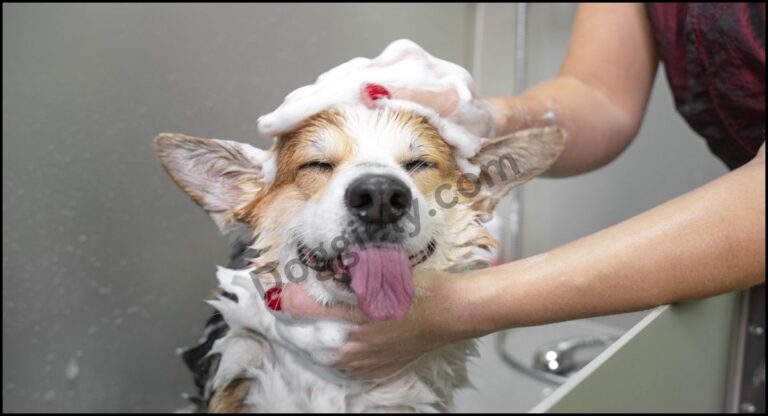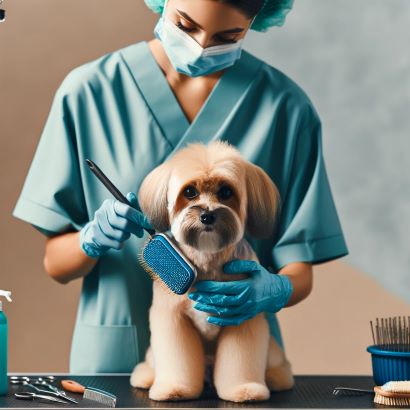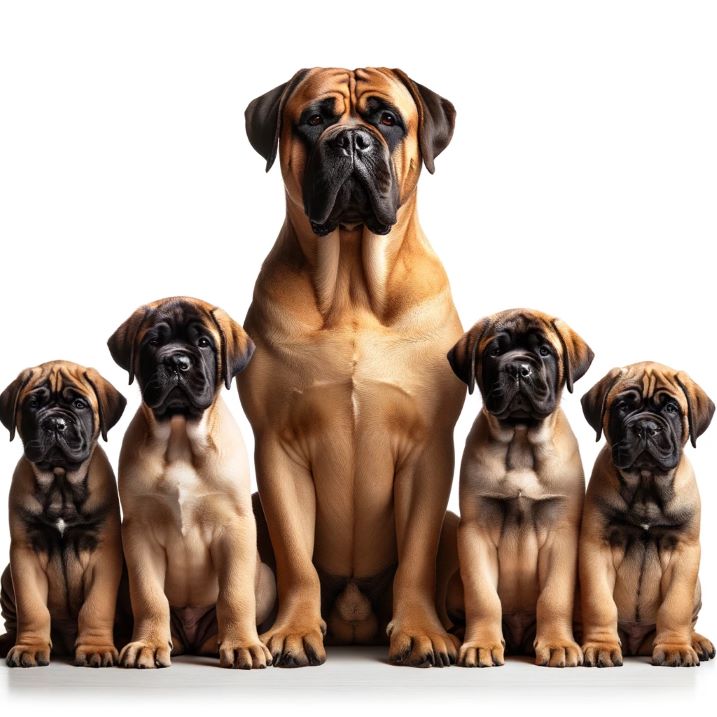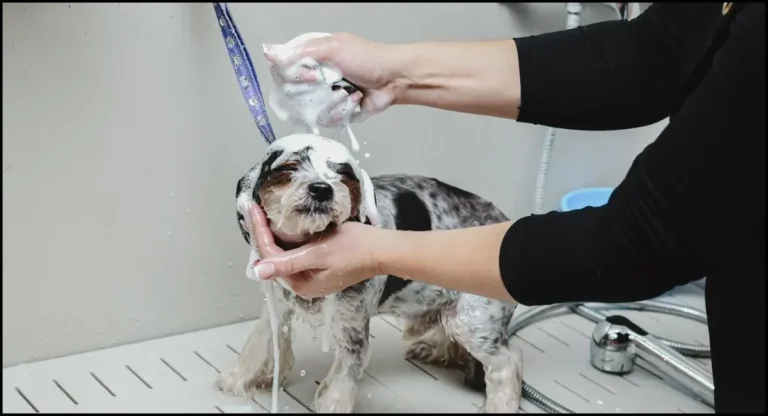german doodle: Introduction and Breed Overview
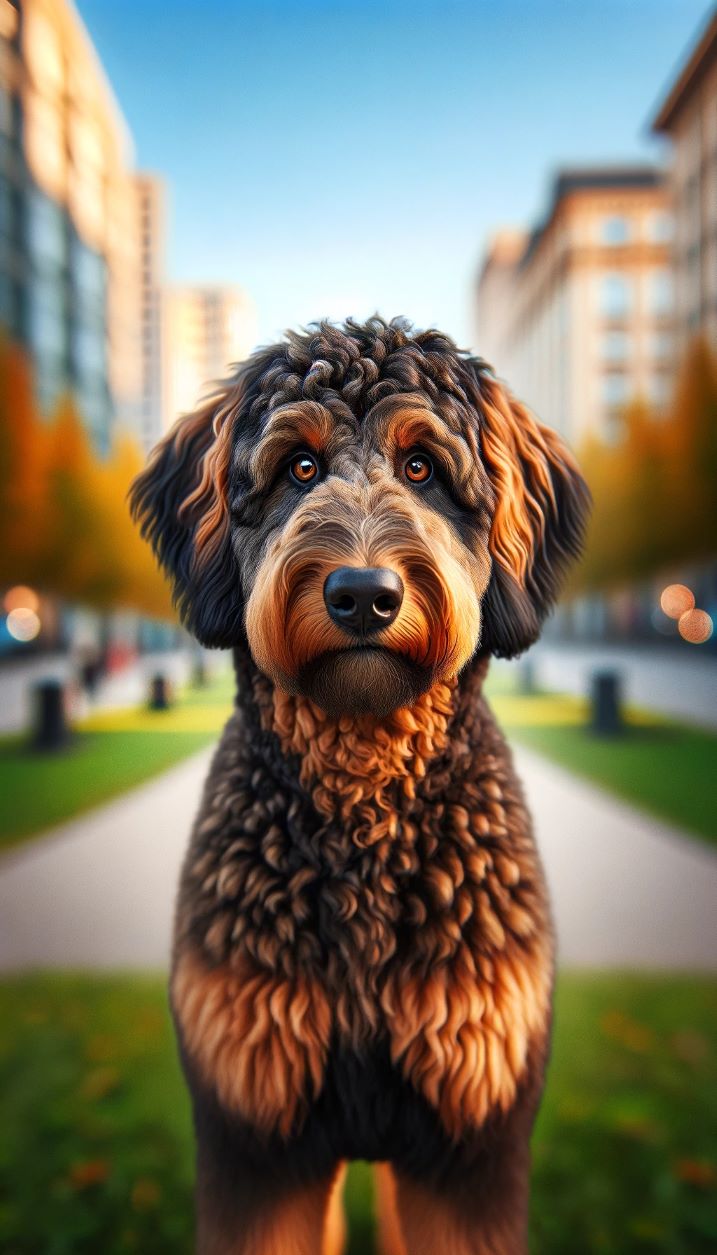
The German Doodle is a fascinating and increasingly popular hybrid breed, known for its intelligence, adaptability, and friendly demeanor. This designer dog combines the best traits of its parent breeds – typically a German Shepherd or another German-origin breed, and a Poodle. The result is a versatile, family-friendly dog that exhibits a balance of loyalty, playfulness, and keen intelligence.
Origin and traits of the breed
German Doodle, the goal was to blend the characteristics of well-established German breeds, such as the German Shepherd, with those of the Poodle, known for its intelligence and hypoallergenic coat.
German Breed Contributions:
- Intelligence and Versatility: German breeds, particularly the German Shepherd, are renowned for their intelligence and versatility. They are often used in various roles, including police work, search and rescue, and as service animals.
- Loyalty and Protective Nature: German breeds are known for their strong loyalty to their families, making them excellent watchdogs and faithful companions.
- Physical Strength and Stamina: These breeds typically bring robust physical attributes, including strength and endurance, which are beneficial for active families or for working roles.
Poodle Contributions:
- Hypoallergenic Qualities: One of the Poodle’s most sought-after traits is its hypoallergenic coat, which makes the breed a popular choice for individuals with allergies.
- Intelligence and Trainability: Poodles are among the most intelligent dog breeds, known for their quick learning ability and ease of training.
- Friendly and Sociable Nature: Poodles generally have a friendly demeanor, enjoying the company of both humans and other animals, which adds a sociable aspect to the German Doodle’s temperament.
The Birth of the German Doodle:
The German Doodle likely emerged in the late 20th or early 21st century, during the surge of interest in creating hybrid breeds that could potentially offer the best of both worlds – the distinctive traits of two different purebred dogs. Breeders aimed to produce a dog that would have the German breeds’ protective and loyal nature, combined with the Poodle’s hypoallergenic coat and friendly temperament.
This combination hoped to minimize some of the health issues that purebred dogs often face, by introducing genetic diversity. Moreover, the mix was intended to create a family-friendly pet that could adapt to various living situations, be it as a companion animal, a working dog, or a therapy animal.
Resulting Traits in German Doodles:
- Appearance: A mix of physical traits, often leading to a sturdy build with a coat that can range from curly to wavy or straight.
- Temperament: A blend of the German breed’s loyalty and the Poodle’s outgoing nature, leading to a well-rounded, sociable, and protective companion.
- Health and Adaptability: With hybrid vigor, German Doodles often enjoy a robust constitution and adaptability to various lifestyles.
physical Characteristics
The physical characteristics of the German Doodle involves comparing different aspects like size, coat type, color, and grooming needs. This comparison will reflect the variability within the breed, stemming from its mixed heritage. Here’s a structured table for this purpose:
| Characteristic | Description |
|---|---|
| Size | – Small: Typically when a smaller Poodle is a parent. – Medium: Most common size, reflecting an average of the two parent breeds. – Large: When larger German breeds are involved, especially German Shepherds. |
| Coat Type | – Curly: Resembling the Poodle’s coat, hypoallergenic. – Wavy: A mix between the Poodle’s curls and the straighter coat of German breeds. – Straight: More like German breed coats, may shed more. |
| Coat Color | – Solid: Black, white, brown, etc. – Bi-colored: Combinations like black and tan, resembling German Shepherd markings. – Multi-colored: Rare, but can occur with variations in patterns. |
| Grooming Needs | – High: Curly coats similar to Poodles require regular grooming. – Moderate: Wavy coats need frequent brushing but less intense grooming. – Lower: Straight coats may require less grooming, but more shedding can be expected. |
| Ear Type | – Floppy: Often inherited from the Poodle side, hanging close to the head. – Upright: More like German breeds, particularly if German Shepherd genes are strong. |
| Tail | – Curled: Similar to some Poodles, especially if curly-coated. – Straight: More common, resembling German breed tails. |
| Build | – Athletic: Reflecting the German breed’s muscular build. – Slimmer: More in line with the Poodle’s physique, especially in smaller variants. |
| Eye Color | – Brown: Most common. – Hazel or Blue: Less common, can be influenced by specific parentage. |
| Nose Color | – Black: Most common. – Brown or Pink: Can vary depending on coat color and genetics. |
| Life Expectancy | – 10-15 years: Varies based on size and overall health, with smaller dogs often living longer. |

Temperament and Personality
The temperament and personality of the German Doodle are influenced by the characteristics of its parent breeds: typically a German Shepherd or another German-origin breed, and a Poodle. This combination results in a dog that is intelligent, sociable, and versatile, making them well-suited for a variety of roles and lifestyles.
Comparison with parent breeds’ temperaments
table to compare the temperament of the German Doodle with its parent breeds, typically a German Shepherd or another German-origin breed and a Poodle.
| Trait | German Doodle | German Breed (e.g., German Shepherd) | Poodle |
|---|---|---|---|
| Intelligence | Very intelligent, quick learners. | Highly intelligent, adept at problem-solving. | Extremely intelligent, easily trainable. |
| Loyalty | Very loyal to their family. | Known for strong loyalty and protectiveness. | Loyal, but often more people-oriented. |
| Energy Level | Energetic, needs regular exercise. | High energy, requires ample physical activity. | Energetic, enjoys mental and physical activities. |
| Playfulness | Playful, enjoys interactive games. | Playful, especially when young or engaged in work. | Very playful and sociable. |
| Protectiveness | Can be protective, varies individually. | Naturally protective, often used as guard dogs. | Less protective, more friendly with strangers. |
| Friendliness | Generally friendly, social. | Can be reserved, especially with strangers. | Very friendly and sociable with people and pets. |
| Trainability | Highly trainable, eager to please. | Very trainable, responds well to structured training. | Highly trainable, excels in obedience. |
| Sensitivity | Sensitive to environment and emotions. | Sensitive to owner’s emotions, can be more independent. | Very sensitive, responsive to their owner’s mood. |
| Adaptability | Adaptable to various environments. | Best in an environment with clear structure and exercise. | Highly adaptable, comfortable in various settings. |
| Suitability for Families | Often great with families, including kids. | Good with families, better with older children. | Excellent family pet, very good with children. |
This table shows the blend of traits in the German Doodle, inheriting the best qualities of both the German breeds and Poodles.
Suitability for families, children, and other pets.
The German Doodle is a breed well-suited for family life, known for its intelligence, loyalty, and friendly nature. These dogs are excellent with families, forming strong bonds and being protective of household members. Their playful and energetic temperament makes them great companions, especially for active families. However, the suitability of larger German Doodles may depend on the availability of ample space.
For children, German Doodles are gentle and patient, making them ideal playmates. Proper training and socialization are crucial to ensure safe interactions between the dog and children, and supervision is recommended, particularly with younger kids.
In households with other pets, German Doodles generally display a sociable attitude. They usually get along with other animals, especially when raised or introduced properly. Yet, their prey drive, inherited from their German breed lineage, and their size and play style should be considered to ensure harmonious relationships with smaller pets.
Health and Lifespan
This table analyze the common health issues in German Doodles along with their respective preventive health measures is a great way to understand the breed’s health profile.
| Common Health Issues | Preventive Health Measures |
|---|---|
| Hip Dysplasia | – Regular vet check-ups for early detection. – Maintaining a healthy weight to reduce joint stress. – Appropriate exercise to strengthen hip muscles. |
| Elbow Dysplasia | – Similar to hip dysplasia: weight management and regular veterinary screenings. – Avoiding excessive strain on joints during puppyhood. |
| Bloat (Gastric Torsion) | – Feeding smaller, more frequent meals. – Avoiding vigorous exercise around meal times. – Monitoring for symptoms and immediate vet consultation if suspected. |
| Allergies (Skin and Food) | – Identifying and avoiding allergens. – Regular grooming to monitor skin health. – Hypoallergenic diet if necessary. |
| Ear Infections | – Regular ear cleaning, especially in dogs with floppy ears. – Keeping ears dry and ventilated. – Monitoring for signs of infection. |
| Eye Problems (e.g., Cataracts) | – Routine eye exams during vet visits. – Monitoring for changes in vision or eye appearance. – Early treatment of any eye issues. |
| Heart Disease | – Regular cardiovascular check-ups with a veterinarian. – Adequate exercise and a balanced diet. – Monitoring for symptoms like fatigue or breathing difficulties. |
| Thyroid Issues | – Regular thyroid function tests, especially if symptoms arise. – Medication and diet management for thyroid imbalances. |
| Cancer | – Regular health screenings as the dog ages. – Prompt veterinary attention to any unusual growths or symptoms. – Maintaining a healthy lifestyle to reduce risk factors. |
Key Factors Affecting Lifespan
The average lifespan of a German Doodle is typically between 10 to 15 years. This range is influenced by various factors stemming from their mixed heritage, size, and overall health management. Understanding these factors can help owners provide the best care to potentially extend their pet’s life.
- Genetic Makeup: As a hybrid, German Doodles inherit traits from both parent breeds – German breeds (like the German Shepherd) and Poodles. The combination of genes can impact their overall health and lifespan. Hybrid vigor can sometimes lead to a healthier, longer-lived dog, but it’s not a guarantee.
- Size: Generally, smaller dog breeds tend to live longer than larger ones. Therefore, smaller-sized German Doodles might have a slight edge in lifespan compared to their larger counterparts.
- Diet and Nutrition: Proper nutrition plays a crucial role in the longevity of any dog. A well-balanced diet that’s appropriate for their age, size, and activity level can prevent obesity and related health issues, thereby potentially extending their lifespan.
- Exercise and Physical Activity: Regular exercise helps in maintaining a healthy weight, strengthening the cardiovascular system, and keeping joints healthy. It’s important, however, to balance exercise with rest, especially for larger German Doodles that may be prone to joint issues.
- Preventive Health Care: Regular veterinary check-ups can catch and address health issues early. Vaccinations, parasite control, and dental care are also critical components of preventive health care.
- Mental Health: Mental stimulation and a stress-free environment contribute to overall health. German Doodles are intelligent and benefit from interactive play, training, and socialization.
- Living Conditions: A safe and comfortable living environment free from hazards and extreme conditions can positively impact health and longevity.
- Breeding Practices: Ethical breeding practices that prioritize health, including genetic screening and health testing of parent breeds, can influence the overall health and lifespan of German Doodles.
Training and Exercise
Training and exercise are essential for the wellbeing of a German Doodle, a breed known for its intelligence and energy. These dogs excel when they receive both mental stimulation and physical activity, making them ideal for active individuals and families.
Training Highlights:
- Early Training and Socialization: Starting from puppyhood, German Doodles are eager to learn. Early training and exposure to various environments and situations are crucial for their development.
- Positive Reinforcement: They respond best to positive reinforcement methods such as praise, treats, and play.
- Consistency in Training: Regular and consistent training sessions are key to helping them understand and remember commands.
- Socialization: Introducing them to different people, pets, and settings from a young age ensures they grow into well-adjusted adults.
- Advanced Training: Given their high intelligence, they benefit from advanced training and mental challenges like agility and obedience training.
Exercise Needs:
- Regular Activity: Daily exercise is vital to maintain their health and prevent boredom.
- Variety in Exercise: They enjoy diverse activities including walks, hikes, swimming, and fetch.
- Adaptation to Size: Exercise should be tailored to their size, with larger dogs needing more rigorous activities.
- Care for Puppies: German Doodle puppy should exercise in a way that’s suitable for their developing bodies.
- Interactive Play: Play that involves both physical activity and interaction with their owner is particularly beneficial.
Training Challenges:
- Stubbornness: Sometimes, German Doodles can exhibit stubbornness, possibly inherited from the Poodle side. This can be managed with consistent, patient training and positive reinforcement.
- Over-Excitement: Their energetic nature can sometimes lead to over-excitement, making them less attentive during training sessions. It’s important to keep training sessions engaging but also focused.
- Distraction: Due to their intelligence and curiosity, they can be easily distracted by new sights and sounds, especially during outdoor training sessions. Training in a controlled environment initially can help build focus.
- Prey Drive: If they inherit a strong prey drive from their German breed lineage, this can pose a challenge in training, especially when off-leash or in areas with wildlife.
- Separation Anxiety: German Doodles can form strong bonds with their owners, leading to potential separation anxiety. Training them to be comfortable alone from a young age is essential.
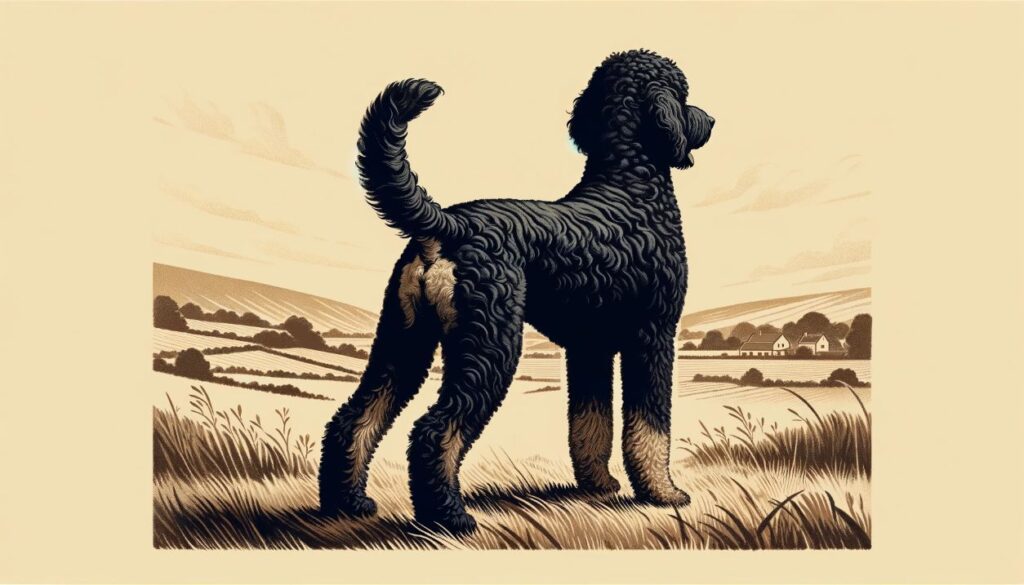
Diet and Nutrition
The nutritional needs of German Doodles, like all dogs, are influenced by factors such as age, size, activity level, and overall health. Providing the right diet and feeding schedule is crucial for their well-being.
Recommended Diet:
- Age-Appropriate Food: Puppies have different nutritional requirements than adult and senior dogs. Feeding age-appropriate food ensures they get the right nutrients for their life stage.
- Consider Special Diets for Health Issues: For German Doodle dog with specific health issues like allergies or joint problems, specialized diets may be necessary.
- Quality of Food: Opt for high-quality dog foods that don’t rely heavily on fillers. Check for foods with whole ingredients and appropriate meat sources.
Feeding Schedule:
- Puppies (Up to 6 Months): German doodle Puppy typically need to be fed 3-4 times a day. This frequent feeding supports their rapid growth and development.
- Adult Dogs: Adult Germandoodle usually do well with two meals a day. This helps regulate their metabolism and prevent bloat, a condition they can be prone to.
- Senior Dogs: Seniors may require fewer calories if they are less active. However, they might need more frequent, smaller meals if they have digestive issues.
- Monitor Weight and Adjust: Regularly monitor their weight and adjust food portions and frequency accordingly. Overfeeding and underfeeding can lead to health issues.
- Access to Fresh Water: Ensure they always have access to fresh water, especially after exercise and in hot weather.
ways to Manage their weight and dietary sensitivities
Managing the weight and dietary sensitivities of German Doodles is crucial for their overall health and wellbeing. Due to their varied genetic makeup, they can sometimes inherit sensitivities common to their parent breeds. Here are strategies to effectively manage their weight and address dietary sensitivities:
Managing Weight:
- Regular Exercise: Ensure they get enough physical activity. Adjust the intensity and duration of exercise based on their age, size, and overall health.
- Controlled Feeding: Avoid free-feeding. Stick to a regular feeding schedule with measured portions to prevent overeating.
- Diet Adjustments: If weight gain is an issue, consult a vet about a lower-calorie diet. High-quality dog food that is lower in fat and carbohydrates but still rich in nutrients can help manage weight.
- Healthy Treats: Use healthy treats, and remember to account for these in their daily calorie intake. Avoid human food as treats, as many are high in calories and fat.
- Regular Weigh-Ins: Regularly weigh your dog and adjust food intake and exercise accordingly. Sudden weight gain or loss should be discussed with a veterinarian.
- Slow Feeding Bowls: For dogs that eat too quickly, slow feeder bowls can help reduce the risk of bloat and aid in better digestion.
Managing Dietary Sensitivities:
- Identify Triggers: Work with a veterinarian to identify any specific food allergies or sensitivities. This may involve an elimination diet to pinpoint the cause.
- Hypoallergenic Diet: For dogs with allergies, a hypoallergenic diet may be necessary. These diets typically use protein sources that the dog has not been exposed to previously.
- Quality of Ingredients: Choose dog foods with high-quality ingredients and minimal additives. Sometimes, simple ingredient lists are better for dogs with sensitivities.
- Regular Monitoring: Observe for signs of dietary sensitivity such as itching, digestive upset, or skin irritations. Regular vet visits are important to monitor their health.
- Probiotics and Supplements: Probiotics can help support digestive health, especially for dogs with sensitive stomachs. Supplements like omega-3 fatty acids can be beneficial for skin health.
- Homemade Diets: In some cases, a homemade diet (formulated with a vet’s guidance) can be beneficial for managing sensitivities, as it allows complete control over ingredients.
Best Dog Toys and Accessories for German Doodles and their benefits.
listing the best dog toys and accessories for German Doodles, along with their benefits, can help owners provide their pets with items that enhance their well-being, training, and enjoyment. Here’s a curated list:
| Dog Toys/Accessories | Benefits for German Doodles |
|---|---|
| Interactive Puzzle Toys | Stimulates mental activity, reduces boredom, and helps in brain development. |
| Chew Toys (Durable) | Supports dental health, satisfies chewing instincts, and relieves stress. |
| Tug-of-War Toys | Good for physical exercise, building strength, and interactive play. |
| Fetch Toys (Balls/Frisbees) | Encourages physical exercise, enhances coordination, and promotes playtime. |
| Plush Toys | Provides comfort, satisfies the need to nurture, and can be calming. |
| Training Clicker | Aids in training, helps in reinforcing positive behavior effectively. |
| Agility Equipment (For Backyard) | Encourages physical activity, agility training, and mental stimulation. |
| Elevated Food and Water Bowls | Promotes better posture during eating/drinking and can aid digestion. |
| Dog Harness | Provides better control during walks, reduces strain on neck and back. |
| Cooling Mat | Offers relief during hot weather, especially for thick-coated individuals. |
| Dog Bed (Orthopedic) | Ensures comfortable rest, supports joints, and beneficial for senior dogs. |
| Grooming Tools (Brushes, Combs) | Essential for coat care, helps in reducing shedding and matting. |
Notes:
- Chew Toy Material: Ensure the material is safe and non-toxic, as German Doodles might be strong chewers.
- Size Appropriateness: Choose toys and accessories that are appropriate for the dog’s size and strength.
- Supervision with Toys: Always supervise playtime, especially with new toys, to ensure safety.
- Variety: Providing a variety of toys helps in catering to different moods and activities, keeping the dog engaged and happy.
Pros and Cons of the Breed
Here is a table to analyze the pros and cons of the German Doodle dog, which can help potential owners make an informed decision about whether this breed is a good fit for their lifestyle. Here’s a structured overview:
| Pros | Cons |
|---|---|
| Intelligence and Trainability: German Doodles are highly intelligent and trainable, making them excellent for obedience, agility, and even service roles. | Grooming Needs: Depending on their coat type, they can require significant grooming, especially if they inherit the Poodle’s curly coat. |
| Friendly and Sociable: They generally have a friendly and affectionate nature, making them great family pets and companions. | Exercise Requirements: Being an energetic breed, they need regular and ample exercise, which might be challenging for less active owners. |
| Good with Children and Other Pets: They are known for being good with children and other animals, especially when properly socialized. | Potential Health Issues: As with any breed, they can be prone to certain genetic health issues, such as hip dysplasia and allergies. |
| Adaptability: German Doodles can adapt well to different living environments, from apartments (with adequate exercise) to homes with yards. | Variability in Traits: As a mixed breed, there can be significant variability in size, coat, and temperament, even within the same litter. |
| Hypoallergenic Qualities: They often inherit the Poodle’s hypoallergenic coat, making them a good option for allergy sufferers. | Separation Anxiety: They can develop separation anxiety if left alone for long periods, due to their strong bond with owners. |
| Low Shedding: Many German Doodles are low-shedding, which is beneficial for keeping a cleaner home environment. | Cost: The cost of purchasing a German Doodle dog from a reputable breeder can be high, in addition to ongoing costs for grooming, healthcare, and maintenance. |
Suitability for different types of owners.
a table to analyze the suitability of German Doodles for different types of owners can provide a clearer perspective on whether this breed aligns well with various lifestyles and preferences. Here’s an overview:
| Type of Owner | Suitability | Reasons/Considerations |
|---|---|---|
| Active Owners | Highly Suitable | Thrive with regular exercise; ideal for active lifestyles. |
| Families with Children | Highly Suitable | Good with children; friendly and playful. |
| First-Time Dog Owners | Moderately Suitable | Intelligent and trainable but require consistent training effort. |
| Elderly/ Less Active Owners | Less Suitable | High energy; need regular exercise and mental stimulation. |
| Apartment Dwellers | Moderately Suitable | Can adapt if given enough exercise; larger variants might struggle. |
| Owners with Other Pets | Highly Suitable | Generally sociable; good with other pets if socialized properly. |
| Allergy Sufferers | Highly Suitable | Often inherit hypoallergenic coat from Poodle parent. |
| Busy/Working Owners | Less Suitable | Prone to separation anxiety; need companionship and time. |
| Owners Seeking Guard Dogs | Moderately Suitable | Can be protective, but temperament varies; not a typical guard dog breed. |
| Rural/Country Living | Highly Suitable | Thrive in spacious environments; good for active outdoor life. |
| Urban/City Living | Moderately Suitable | Suitable if exercise needs are met; larger dogs may need more space. |
This table provides a general guideline on the suitability of German Doodles for various types of owners. While they are adaptable and can fit into many homes, their exercise needs, temperament, and size are key factors to consider.
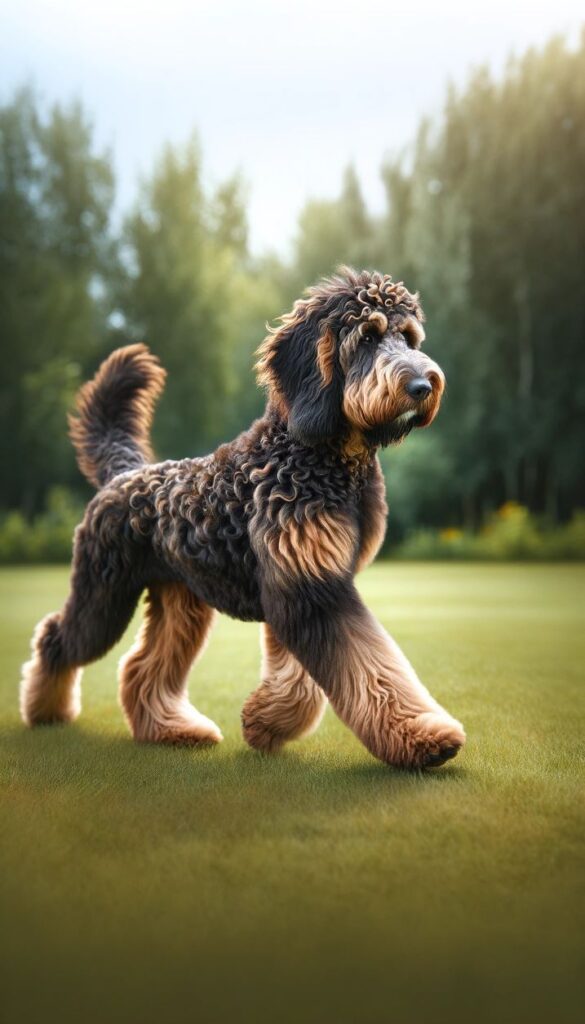
Costs of ownership (initial and ongoing).
Breakdown of the costs associated with owning a German Doodle dog helps in understanding both the initial investment and the ongoing expenses. This overview provides a clearer picture of the financial commitment involved in owning this breed:
| Cost Category | Initial Costs | Ongoing Costs (Annual) |
|---|---|---|
| Purchase Price | Varies widely depending on breeder, location, and dog’s lineage. Can range from a few hundred to several thousand dollars. | N/A |
| Supplies (Crate, Bed, etc.) | Can range from $200 to $500, depending on quality and brand. | Replacement or additional supplies as needed. |
| Veterinary Care (Initial) | Includes vaccinations, deworming, spaying/neutering, microchipping. Approximately $200 to $500. | Annual check-ups, vaccinations, heartworm and flea/tick prevention. Approx. $200 to $300. |
| Food | Initial food supply cost: $50 to $100. | Depends on diet; roughly $600 to $1200 per year. |
| Grooming | Basic grooming tools: $50 to $100. | Professional grooming every 6-8 weeks: $600 to $1200 per year. |
| Training | Basic training classes: $150 to $300. | Ongoing or advanced training, if chosen. |
| Pet Insurance | Monthly premiums can start immediately. | Monthly premiums, averaging $200 to $600 per year, depending on coverage. |
| Emergency Veterinary Costs | N/A | Varies; setting aside an emergency fund is recommended. |
| Toys and Accessories | Initial cost: $50 to $100. | Annual replacement or new purchases: $50 to $150. |
| Miscellaneous (Dog Walking, Boarding) | N/A | Can vary widely depending on services used. |
Notes:
- Regional Variations: Costs can vary significantly depending on the region or country.
- Health: Dogs with health issues may incur higher veterinary costs.
- Lifestyle: Owners who opt for high-end products or services will face higher costs.
Things to consider before getting a German Doodle dog
Before bringing a German Doodle puppy into your home, there are several important factors to consider. This decision should be based on an understanding of the breed’s characteristics, your lifestyle, and the commitment required to provide a happy and healthy life for your new pet.
1. Lifestyle Fit:
- Activity Level: German Doodles are energetic and require regular exercise. Consider if your lifestyle can accommodate daily walks, playtime, and mental stimulation.
- Space: While they can adapt to various living environments, larger German Doodles will appreciate more space. Ensure you have enough room for them to move comfortably.
2. Time Commitment:
- Training and Socialization: They need consistent training and socialization, especially as puppies. Assess whether you have the time to commit to their training and socialization needs.
- Grooming: Depending on their coat type, Germandoodle can require regular grooming. This includes brushing, bathing, and professional grooming sessions.
3. Financial Responsibility:
- Initial Costs: The purchase price from a reputable breeder can be significant. Also, initial costs include supplies, vaccinations, spaying/neutering, and microchipping.
- Ongoing Expenses: Budget for regular expenses such as food, grooming, veterinary check-ups, pet insurance, and emergency healthcare.
4. Health Considerations:
- Genetic Health Issues: Be aware of the breed’s potential health issues like hip dysplasia, allergies, and others. Regular veterinary care and health screenings are important.
- Longevity: Plan for the long-term commitment. German Doodles have a lifespan of approximately 10-15 years, requiring a long-term emotional and financial commitment.
5. Family Environment:
- Children and Other Pets: Ensure that a German Doodle dog is the right fit for your entire family, including children and other pets. They are generally good with kids and other animals but require proper introduction and training.
6. Breeder Reputation:
- Ethical Breeding: Choose a reputable breeder who follows ethical breeding practices, provides health clearances for the parent breeds, and prioritizes the well-being of their dogs.
7. Alternative Options:
- Adoption: Consider adopting from a shelter or rescue. Many mixed breeds, including German doodle puppy, need loving homes.
8. Long-Term Care:
- Future Planning: Think about your future plans, including potential moves, travel, or lifestyle changes, and how a dog would fit into these plans.
Final thoughts
The ideal owner for a German Doodle is someone who embraces an active, engaged, and nurturing approach to dog ownership. This breed is best suited to those who can offer ample exercise, consistent training, and a loving home environment. The rewards of owning a German Doodle are immense for those who can meet their needs, offering a loyal, intelligent, and joyful companion for many years.
Related Posts:
Read More: Why Does My Dog Open His Mouth When I Pet Him? 7 Reasons
Read More: Why Does My Dog Keep Sniffing My Legs: 5 Common Reasons
Read More: Why Does My Dog Bite Me In The Morning? 2 Way To safe From
Read More: Why Are My Dogs Balls Black? Best Number 1 Answer
Read More: Why Do Dogs Like Peanut Butter?
Read More: Dogs Eyes Rolling Back: What Does It Mean & Should You Fret?
faq
What is a German Doodle?
A German Doodle is a crossbreed between a German Shepherd (or another German breed) and a Poodle. They are known for their intelligence, friendly nature, and often hypoallergenic coats.
What sizes do German Doodles come in?
Their size can vary significantly, ranging from small to large, depending on the size of the Poodle parent and the specific German breed used.
Are German Doodles good family pets?
Yes, they are generally known to be excellent family pets. They are typically affectionate, good with children, and can get along well with other pets if properly socialized.
Do German Doodles require a lot of grooming?
Their grooming needs depend on their coat type. German Doodles with curlier Poodle-like coats require more frequent grooming to prevent matting, while those with straighter coats may require less grooming.
How much exercise does a German Doodle need?
German Doodles are active and energetic dogs that require regular exercise. Daily walks, playtime, and mental stimulation activities are recommended.
Are German Doodles easy to train?
Yes, they are generally easy to train due to their intelligence and eagerness to please. They respond well to positive reinforcement techniques.
Do German Doodles have any common health issues?
Like all breeds, they can be prone to certain health issues, including hip dysplasia, elbow dysplasia, allergies, and bloat. Regular veterinary check-ups are important for early detection and management.
What is the lifespan of a German Doodle?
They typically live for 10 to 15 years, depending on various factors like genetics, health, diet, and care.
Can German Doodles live in apartments?
German Doodles can adapt to apartment living if they receive adequate exercise and mental stimulation. However, larger variants may be better suited to homes with more space.
Are German Doodles hypoallergenic?
Many German Doodles inherit the hypoallergenic coat of the Poodle parent, making them a suitable option for many allergy sufferers. However, it’s important to note that no dog is 100% hypoallergenic.
How much does it cost to own a German Doodle?
The cost can vary widely based on factors like location, breeder, and healthcare needs. Initial costs include the purchase price, supplies, and veterinary care, while ongoing costs include food, grooming, and regular veterinary visits.
Is the German Doodle the right breed for me?
If you are looking for an intelligent, friendly, and active dog and can commit to their exercise, grooming, and training needs, a German Doodle could be a great fit. Consider your lifestyle and household environment when deciding.
